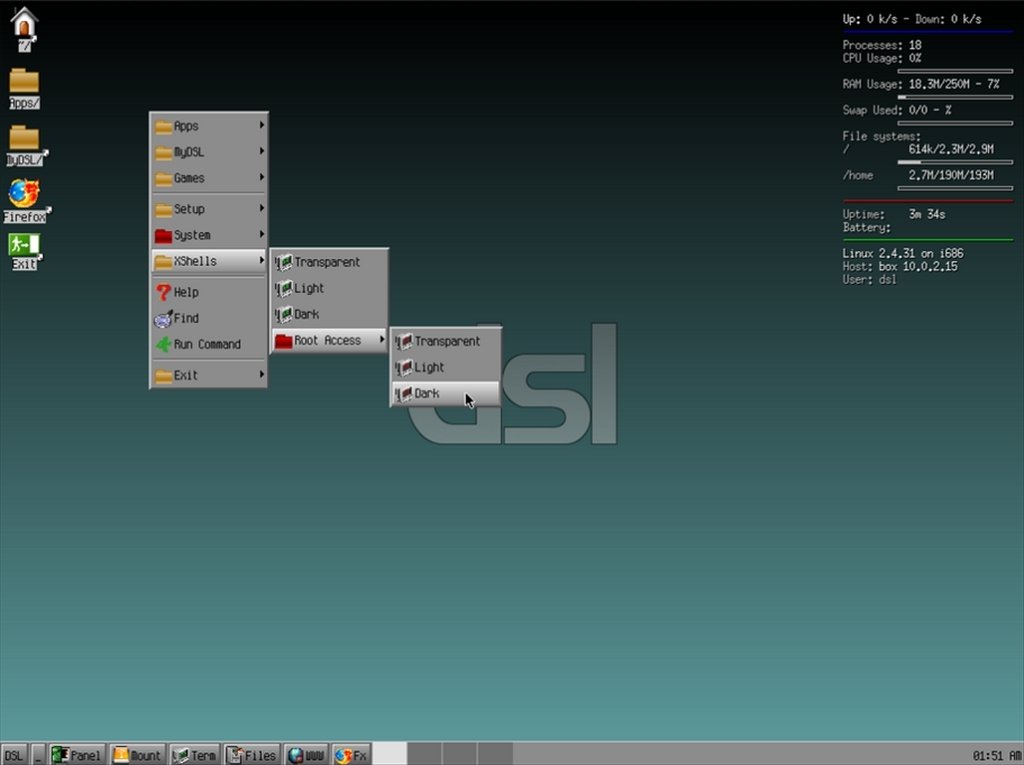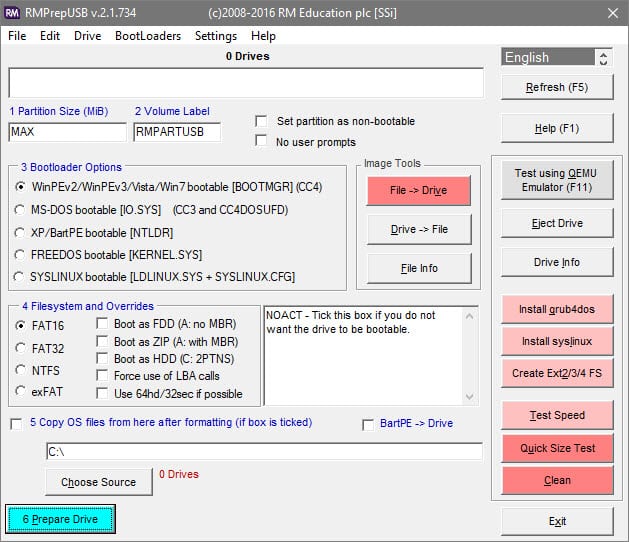Version: 2.0.7.9 Filesize: 1.76MB
This is the program that will be used to create this multi-boot flash drive. Insert your flash drive in an open USB slot. Open my computer. Once the explorer window is open, make sure you are able to see all of the available drives. Note the drive letter of the flash drive that you want to use. So if that sounds interesting, follow the guide below to create multiple bootable ISO files with YUMI. Steps to use YUMI to create multiboot USB. Download YUMI Multiboot USB creator. There are two versions of YUMI to download — the legacy YUMI tool and YUMI UEFI. It’s worth noting that the UEFI version uses GRUB2 for both UEFI and BIOS booting. Plug the bootable installer into a Mac that is connected to the internet and compatible with the version of macOS you're installing. Turn on your Mac and continue to hold the power button until you see the startup options window, which shows your bootable volumes. Select the volume containing the bootable installer, then click Continue. How to make a multiboot pendrive using Yumi. Create Bootable USB Flash Drive (YUMI Multiboot). Learn, how to Create a MultiSystem Bootable USB Flash Drive.
- Open Source
- In English
- Scanned
- 4.06
- (6.74 K Downloads)
Yumi Usb Linux
We all use the computer for our personal and professional use. The computer helps us by making our work more comfortable and more efficient. A PC/Laptop provides us various software that helps us in multiple tasks. A bootable flash drive will allow you to boot your device, rather than your hard drive, from the file system on the flash drive. On the hard drive, your device has a boot sector that includes details about its operation. The boot record for the volume would consist of instructions about running an operating system or other programs. It must have a master boot record, a volume boot record, and contain an operating system or a program that can be run for us to boot into a flash drive. Many software helps us to create a bootable flash drive; one such software is YUMI.
YUMI is a Pen Drive Linux product; this software helps you create multiboot USB flash drives efficiently and effortlessly. It can be used to build a Multiboot USB Flash Drive with various operating systems, antivirus programs, cloning disks, diagnostic tools, and more. Unlike MultiBoot ISOs used by grub to boot ISO files directly from USB, YUMI uses sys-Linux to boot extracted distributions stored on the USB system and, if necessary, reverts to grub to boot multiple ISO files from USB. This software provides a simple user-interface, which makes it very easy for you to use this software. All files are contained inside the Multiboot or folder (depending on the version), aside from a few distributions, allows for a beautifully structured Multiboot USB Drive that can still be used for other storage purposes. This software functions a lot like the Universal USB Installer, except that more than one distribution can be installed to run Live from your USB. It is also possible to uninstall distributions using the same method. All these features make this software useful and a must-have.
Features of YUMI

- Beneficial- This software is an efficient software that helps you create USB Flash drives efficiently and effortlessly.
- Simple GUI- This software provides a simple user-interface, making it very easy for you to use this software.
- Efficient-YUMI uses sys-Linux to boot extracted distributions stored on the USB device and, if necessary, reverts to grub to boot multiple ISO files from USB, unlike MultiBootISOs that grub uses to boot ISO files directly from USB.
- Easy to download and install- This software is straightforward to download and install. It only takes a few minutes to complete the installation process.
How to download YUMI on Windows?
- 1- Just click on the download button and select a location to download the file.
- 2- After the download finishes, open the YUMI folder and extract its content.
- 3- Now, open the YUMI folder and double-click on the YUMI file.
- 4- Now an installation window appears, now agree to the License Agreement and select an installation location.
- 5- It will take a few minutes to install YUMI; click on the Finish button after installation.
Pros
- This software helps you create bootable USB flash drives.
- This software provides a simple GUI.
- This software is easy to download ad install.
Cons
- This software doesn’t support multiple windows OS.
App Name: YUMI
License: Open Source
OS: Windows XP / Vista / Windows 7 / Windows 8 / Windows 10
Latest Version: V2.0.7.9
Latest Update: 2021-03-23

Developer: Pen Drive Linux
User Rating: 4.06
Category: Cleaning and Tweaking
These advanced steps are primarily for system administrators and others who are familiar with the command line. You don't need a bootable installer to upgrade macOS or reinstall macOS, but it can be useful when you want to install on multiple computers without downloading the installer each time.
What you need to create a bootable installer
- A USB flash drive or other secondary volume formatted as Mac OS Extended, with at least 14GB of available storage
- A downloaded installer for macOS Big Sur, Catalina, Mojave, High Sierra, or El Capitan
Download macOS
Yumi Usb Boot
- Download: macOS Big Sur, macOS Catalina, macOS Mojave, or macOS High Sierra
These download to your Applications folder as an app named Install macOS [version name]. If the installer opens after downloading, quit it without continuing installation. To get the correct installer, download from a Mac that is using macOS Sierra 10.12.5 or later, or El Capitan 10.11.6. Enterprise administrators, please download from Apple, not a locally hosted software-update server. - Download: OS X El Capitan
This downloads as a disk image named InstallMacOSX.dmg. On a Mac that is compatible with El Capitan, open the disk image and run the installer within, named InstallMacOSX.pkg. It installs an app named Install OS X El Capitan into your Applications folder. You will create the bootable installer from this app, not from the disk image or .pkg installer.

Use the 'createinstallmedia' command in Terminal
- Connect the USB flash drive or other volume that you're using for the bootable installer.
- Open Terminal, which is in the Utilities folder of your Applications folder.
- Type or paste one of the following commands in Terminal. These assume that the installer is in your Applications folder, and MyVolume is the name of the USB flash drive or other volume you're using. If it has a different name, replace
MyVolumein these commands with the name of your volume.
Big Sur:*
Catalina:*
Mojave:*
High Sierra:*
El Capitan:
* If your Mac is using macOS Sierra or earlier, include the --applicationpath argument and installer path, similar to the way this is done in the command for El Capitan.
After typing the command:
- Press Return to enter the command.
- When prompted, type your administrator password and press Return again. Terminal doesn't show any characters as you type your password.
- When prompted, type
Yto confirm that you want to erase the volume, then press Return. Terminal shows the progress as the volume is erased. - After the volume is erased, you may see an alert that Terminal would like to access files on a removable volume. Click OK to allow the copy to proceed.
- When Terminal says that it's done, the volume will have the same name as the installer you downloaded, such as Install macOS Big Sur. You can now quit Terminal and eject the volume.
Use the bootable installer
Determine whether you're using a Mac with Apple silicon, then follow the appropriate steps:
Apple silicon
- Plug the bootable installer into a Mac that is connected to the internet and compatible with the version of macOS you're installing.
- Turn on your Mac and continue to hold the power button until you see the startup options window, which shows your bootable volumes.
- Select the volume containing the bootable installer, then click Continue.
- When the macOS installer opens, follow the onscreen instructions.
Intel processor
- Plug the bootable installer into a Mac that is connected to the internet and compatible with the version of macOS you're installing.
- Press and hold the Option (Alt) ⌥ key immediately after turning on or restarting your Mac.
- Release the Option key when you see a dark screen showing your bootable volumes.
- Select the volume containing the bootable installer. Then click the up arrow or press Return.
If you can't start up from the bootable installer, make sure that the External Boot setting in Startup Security Utility is set to allow booting from external media. - Choose your language, if prompted.
- Select Install macOS (or Install OS X) from the Utilities window, then click Continue and follow the onscreen instructions.
Learn more
A bootable installer doesn't download macOS from the internet, but it does require an internet connection to get firmware and other information specific to the Mac model.
For information about the createinstallmedia command and the arguments you can use with it, make sure that the macOS installer is in your Applications folder, then enter the appropriate path in Terminal: